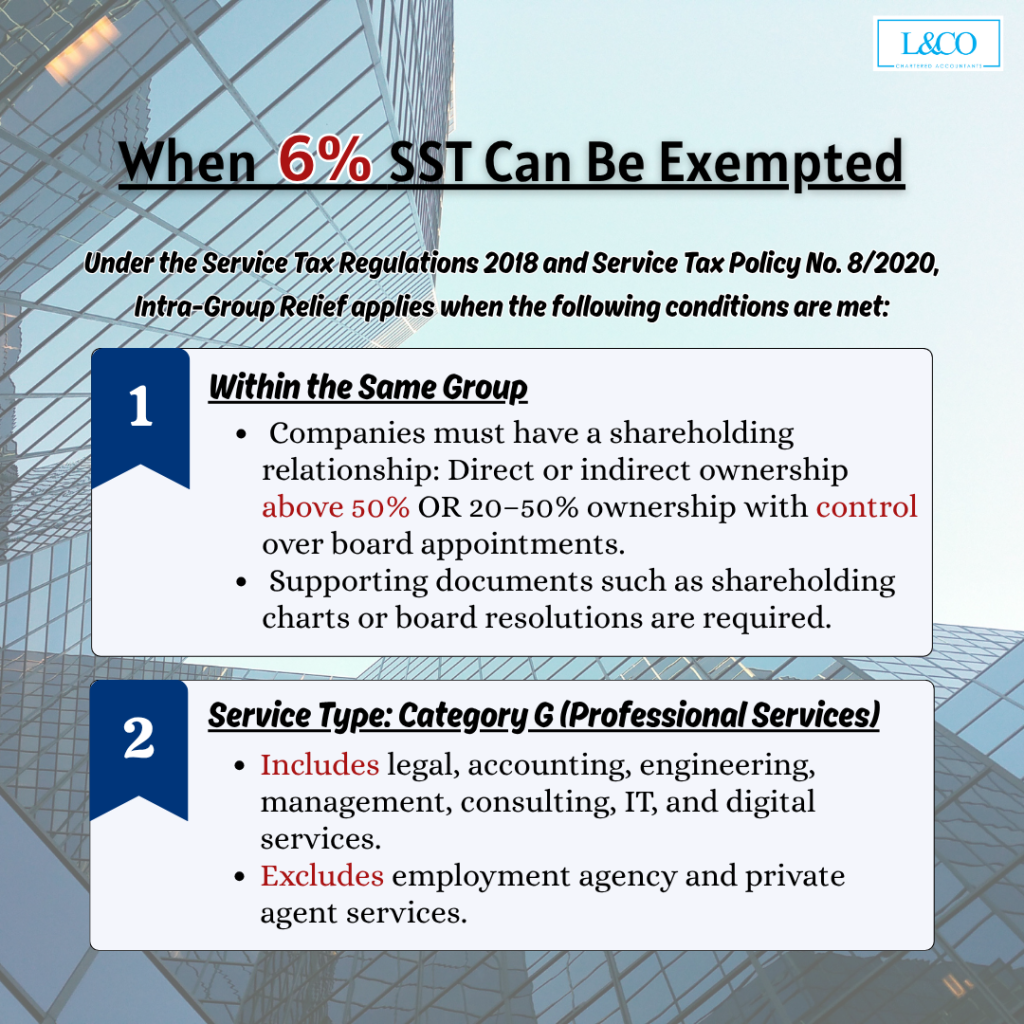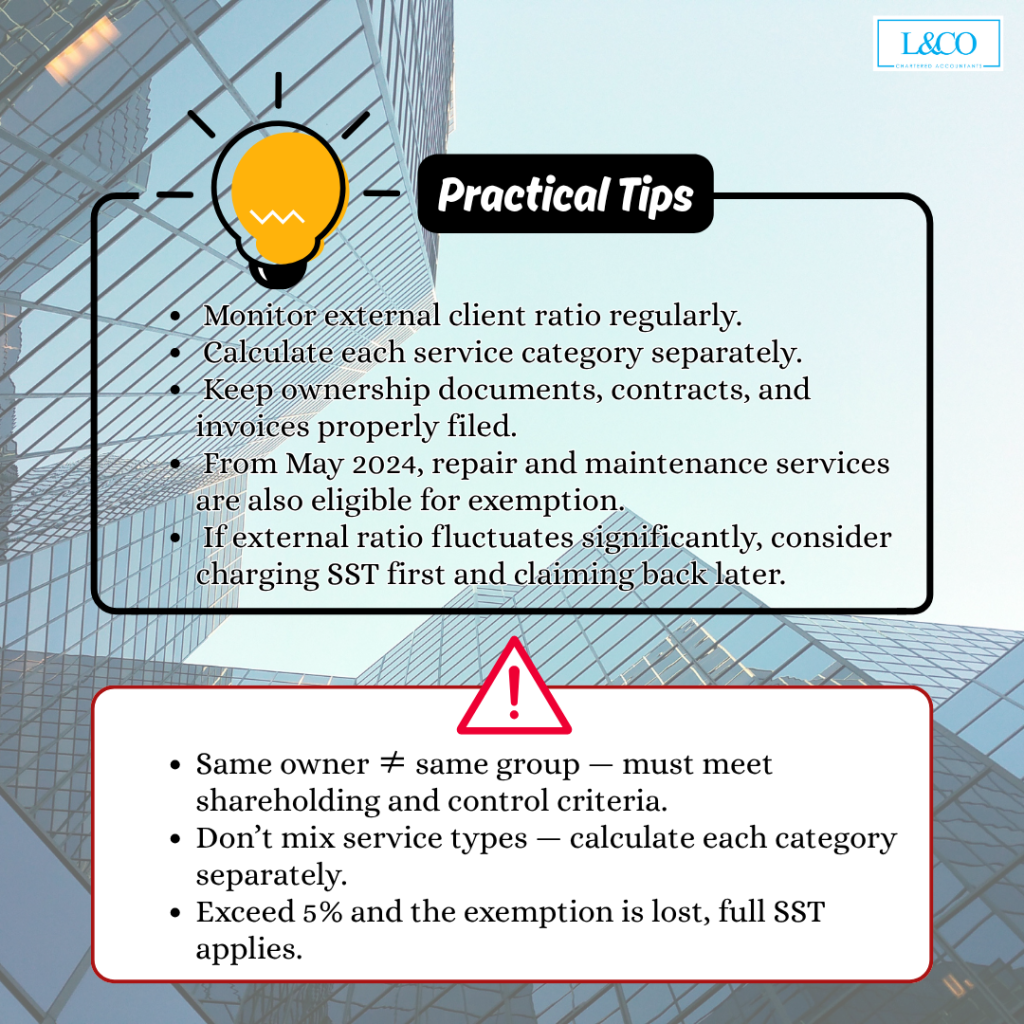Does intercompany billing within the same group require a 6% SST? Not necessarily!
When 6% SST Can Be Exempted?
Under the Service Tax Regulations 2018 and Service Tax Policy No. 8/2020, Intra-Group Relief applies when the following conditions are met:
1. Within the Same Group
- Companies must have a shareholding relationship: Direct or indirect ownership above 50% OR 20–50% ownership with control over board appointments.
- Supporting documents such as shareholding charts or board resolutions are required.
2. Service Type: Category G (Professional Services)
- Includes legal, accounting, engineering, management, consulting, IT, and digital services.
- Excludes employment agency and private agent services.

3. The “5% Rule” — External Clients ≤ 5%
- If the same service is also provided to non-group clients, exemption still applies as long as external revenue ≤ 5%.
- Once external clients exceed 5%, the entire service category becomes taxable (including intra-group transactions).
- Each service category (e.g., IT, management) must be assessed separately.
4. 12-Month Forward Assessment Period
- The group ratio is projected for the next 12 months.
- Regular reviews (monthly or quarterly) are recommended to prevent late-year breaches.
- If qualification is later met, a credit note may be issued to reverse SST.

Practical Tips
- Monitor external client ratio regularly.
- Calculate each service category separately.
- Keep ownership documents, contracts, and invoices properly filed.
- From May 2024, repair and maintenance services are also eligible for exemption.
- If external ratio fluctuates significantly, consider charging SST first and claiming back later.
Common Misconceptions
- Same owner ≠ same group — must meet shareholding and control criteria.
- Don’t mix service types — calculate each category separately.
- Exceed 5% and the exemption is lost — full SST applies.

**Last Updated on 04.11.2025



 (201706002678 & AF 002133)
(201706002678 & AF 002133)